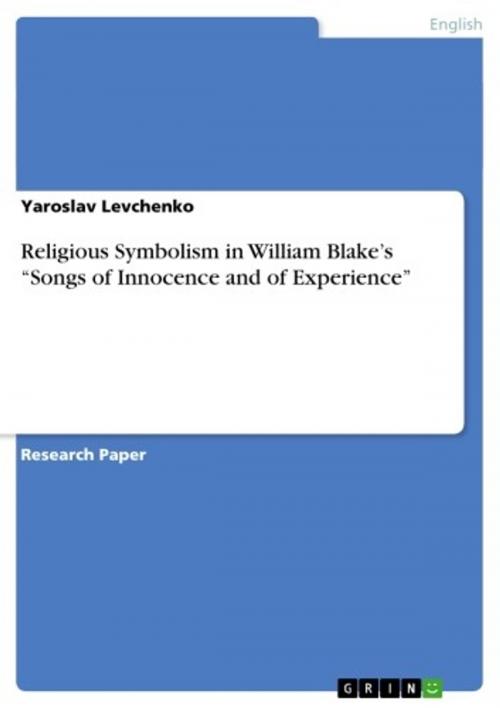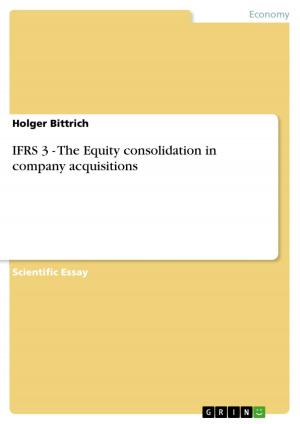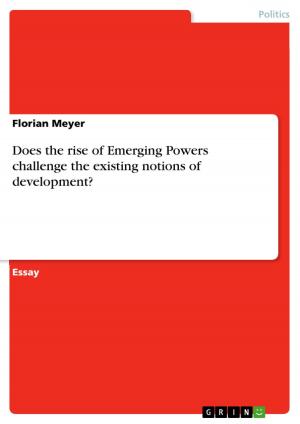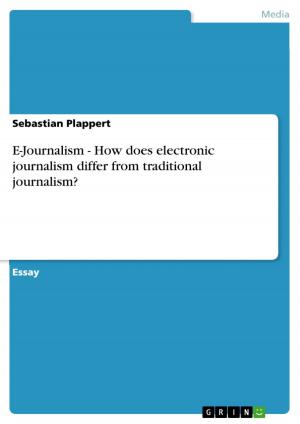Religious Symbolism in William Blake's 'Songs of Innocence and of Experience'
Fiction & Literature, Literary Theory & Criticism, British| Author: | Yaroslav Levchenko | ISBN: | 9783640584505 |
| Publisher: | GRIN Publishing | Publication: | April 5, 2010 |
| Imprint: | GRIN Publishing | Language: | English |
| Author: | Yaroslav Levchenko |
| ISBN: | 9783640584505 |
| Publisher: | GRIN Publishing |
| Publication: | April 5, 2010 |
| Imprint: | GRIN Publishing |
| Language: | English |
Research Paper (postgraduate) from the year 2009 in the subject English Language and Literature Studies - Literature, grade: 10, Luhansk Taras Shevchenko National University, language: English, abstract: The poetry as well as the whole art of William Blake is abundant with symbols and allegories that carry a strong charge - inspirational, charismatic and religious. It is the result of numerous factors including the peculiarity of Blake's epoch, the city he was born, raised and lived in, the traditions of his family, and, of course, his personal features that are imprinted on every line of his writings and every engraving or picture he created. Moreover, he was the first poet after Edmund Spenser who produced his own mythological reality [1, 192], which proves the power of his imagination and creative potential. In his childhood and youth, William Blake was surrounded and impacted by objects, phenomena and people that were of pronounced symbolic character - his Dissenter origin, Bible study, visions and revelations that visited him throughout all his life, work in Westminster Abbey [1, 74] - and they could not but be incorporated in his masterpieces. If we add here interest in and adherence to Emmanuel Svedenborg and Jacob Boehme [2, xxi], the background of his symbolism may become more or less clear.
Research Paper (postgraduate) from the year 2009 in the subject English Language and Literature Studies - Literature, grade: 10, Luhansk Taras Shevchenko National University, language: English, abstract: The poetry as well as the whole art of William Blake is abundant with symbols and allegories that carry a strong charge - inspirational, charismatic and religious. It is the result of numerous factors including the peculiarity of Blake's epoch, the city he was born, raised and lived in, the traditions of his family, and, of course, his personal features that are imprinted on every line of his writings and every engraving or picture he created. Moreover, he was the first poet after Edmund Spenser who produced his own mythological reality [1, 192], which proves the power of his imagination and creative potential. In his childhood and youth, William Blake was surrounded and impacted by objects, phenomena and people that were of pronounced symbolic character - his Dissenter origin, Bible study, visions and revelations that visited him throughout all his life, work in Westminster Abbey [1, 74] - and they could not but be incorporated in his masterpieces. If we add here interest in and adherence to Emmanuel Svedenborg and Jacob Boehme [2, xxi], the background of his symbolism may become more or less clear.















